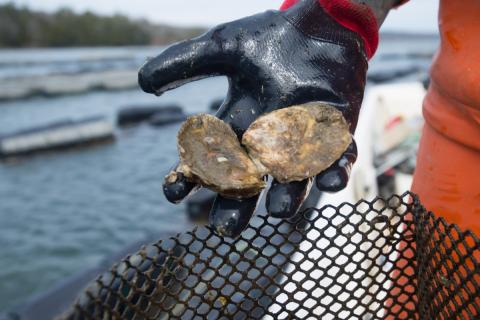
Vibrio parahaemolyticus (Vp) is the leading cause of seafood-borne bacterial infections in the US that is increasingly linked to shellfish harvested in the Northeast. Previous research indicates that in northernmost locations for Vp populations, a particular strain of Vp had bacteriophage (viruses, or “phage”) integrated into their genome, suggesting that the successful founders of each of these populations became phage-infected and then expanded their populations. These phages cause chronic infections, thereby presumably impairing the growth of its host bacterial cell. And yet the correlation of phage presence with successful population establishment suggests the phages could provide a fitness benefit that balances the costs of chronic infection.
Researchers will conduct experiments to compare chronically bacteriophage-infected Vp to phage-free Vp to quantify the effects of phage on Vp fitness and virulence. Concurrently, researchers will evaluate the extent that presence of these phage could serve as a diagnostic test for tracing isolates to harvest locations, tracking the spread of strains to new areas, and as a predictive measure for risk of disease from shellfish product. Combined these will allow better protection of shellfish consumers, and also allow growers to provide a safe product and minimize the negative impact of harvesting closures.

Principle Investigator
Cheryl Whistler, Ph.D.
Professor, Molecular, Cellular, and Biomedical Sciences, University of New Hampshire
Contact Dr. Whistler
Cheryl.Whistler@unh.edu
Project Funding Cycle
2018-2019 NH Sea Grant Biennial Research Funding